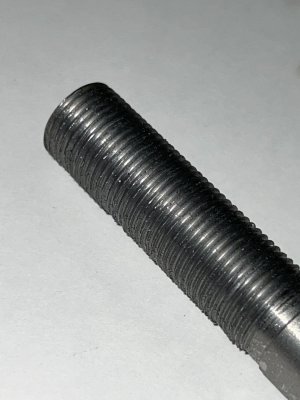- Joined
- Apr 24, 2021
- Messages
- 462
It’s 5/8 stock that is .622. So, my little theory about the threads being to deep is wrong. Why would that happen at the exact same depth both times? I ran 200 rpm’s because I have never threaded anything under that. Is it really that sensitive to the speed it’s running? I also can’t imagine that im going to have to take .002 doc once I get .040 deep. That would take forever..557 is correct, but that is the biggest it can be and still be in spec. Your OD is oversized if you went with .625
Last edited:





